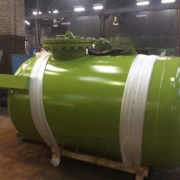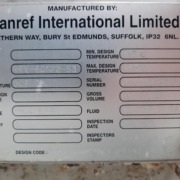The History of ASME – boiler and pressure vessel code
Why ASME was formed – and mandatory but only in the USA.
The following excerpt from ASME gives an insight into the evolution of this boiler and pressure vessel code.
The ASME Boiler and Pressure Vessel Code (B&PVC) was conceived in 1911 out of a need to protect the safety of the public. This need became apparent shortly after the conception of the steam engine in the late 18th century. In the 19th century there were literally thousands of boiler explosions in the United States and Europe, some of which resulted in many deaths. The consequences of these failures were locally focused and, other than one or two, received minimal national or international attention. Undoubtedly, one of the most important failures that proved the need for Boiler Laws was the boiler explosion that occurred at the Grover Shoe Factory in Brockton, Massachusetts on March 10, 1905. That incident resulted in 58 deaths and 117 injuries and completely leveled the factory. This catastrophe brought attention to the need to protect the public against such accidents with pressure-retaining equipment.
The first Boiler and Pressure Vessel Code (1914 Edition) was published in 1915; it consisted of one book of 114 pages, each of which measured 5 inches by 8 inches. Today there are 28 books, including 12 books dedicated to the Construction and Inspection of Nuclear Power Plant Components and two Code Case books. The 28 books are either Standards that provide the rules for fabricating a component or they are support documents such as Materials (Section II, Parts A through D), Non-Destructive Examination (Section V) and Welding (Section IX). Code Cases provide rules that permit the use of materials and alternative methods of construction that are not covered by existing B&PVC rules. The 2001 Edition of the Boiler and Pressure Vessel Code was over 16,000 pages, each of which measures 8-1/2 inches by 11 inches.





Leave a Reply
Want to join the discussion?Feel free to contribute!